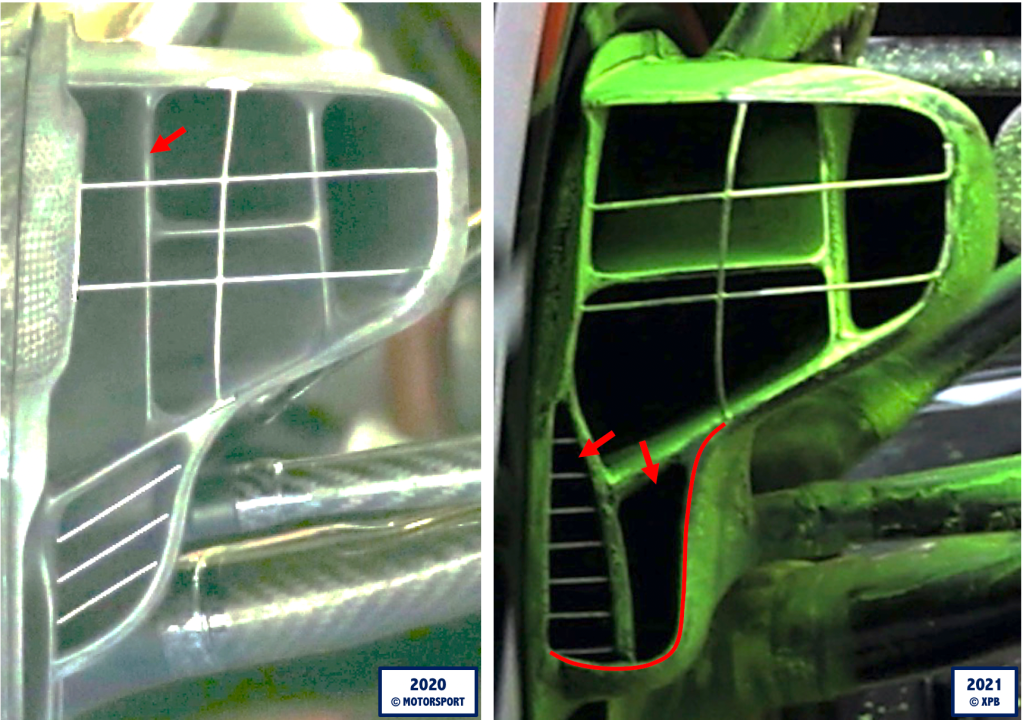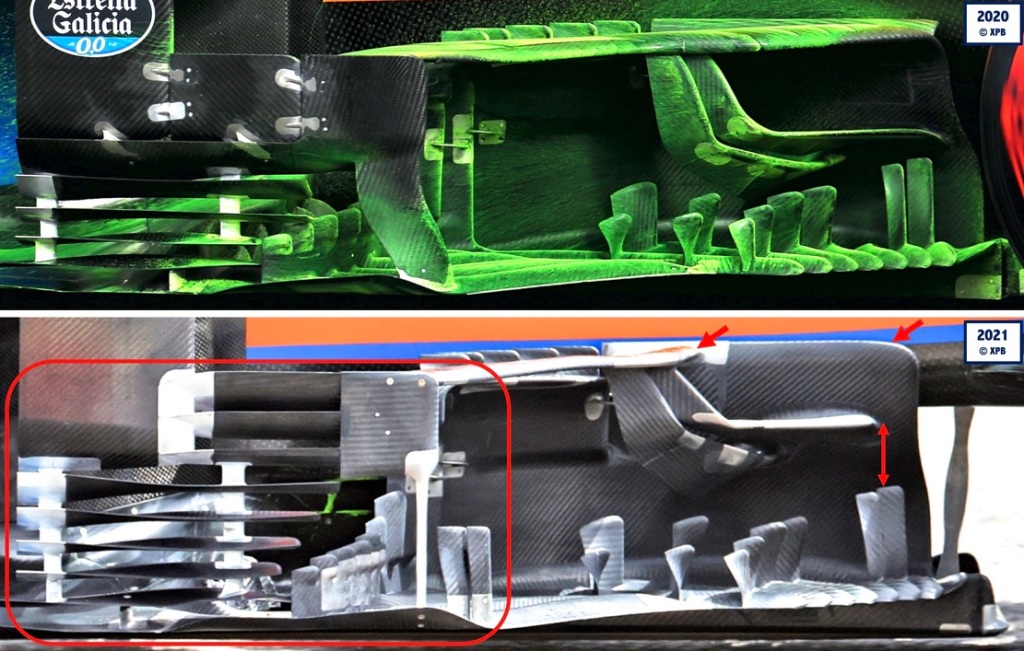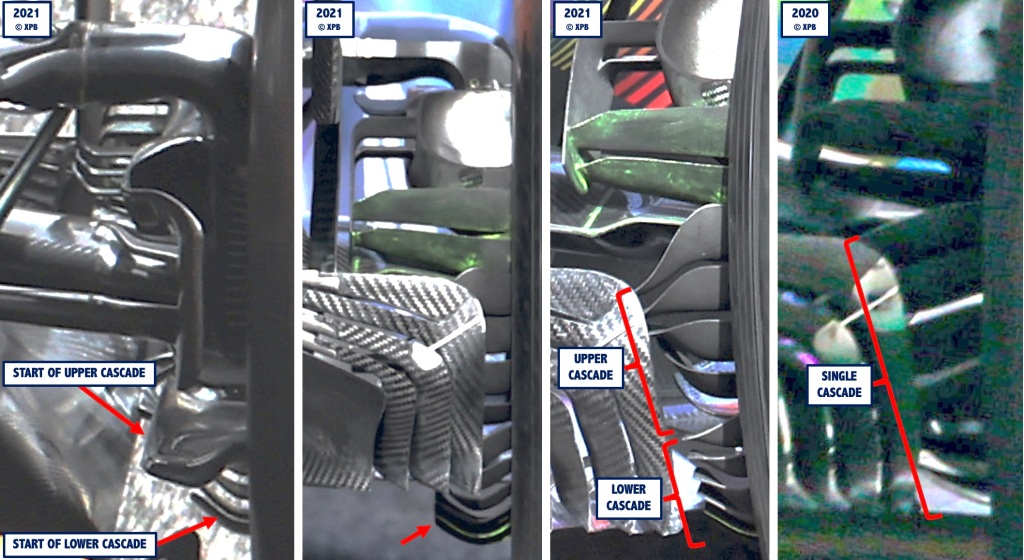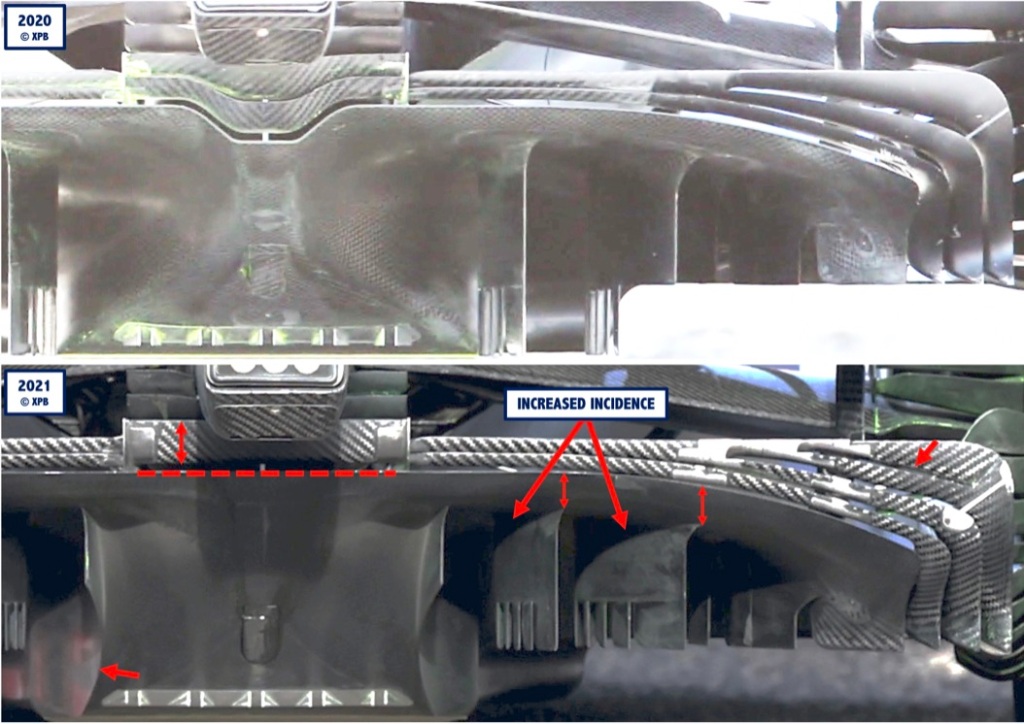McLaren had a productive pre-season test with good reliability, despite switching power unit supplier over the winter. While the team did not complete a large amount of mileage, this was not a concern as the focus was on the learning about the car as well as confirming its ability to run without issues. As the team had concealed a number of areas of the car at its launch, the pre-season test was the first opportunity to view many areas in detail – this article looks into those.
Starting with the front brake ducts, these are an evolution of the design the team introduced towards the end of last season. The overall inlet size is larger, which should allow the team to direct more mass flow out through the front wheel, pushing the front wheel wake outboard. This will come at the cost of drag, but outwash is a critical flow feature in the current regulatory cycle in terms of generating downforce. Note that the ducting has been revised within the main inlet scoop.

Further rearward, looking at the bargeboard region, this has also followed on from the final design introduced in 2020, at the Nurburgring. The leading edge of the upper horizontal bargeboard wing has been moved rearward, while the two element lower wing has been raised and begins slightly further back. Outboard, the middle of the three vertical sidepod vanes has been converted into three horizontal elements, in line with the grid trend over the last couple of years. This design should generate some more local load at the expense of drag.

The rear brake duct wings were affected by the 2021 regulation changes – the bottom of the legality box required a reduced span (by 40mm). This left teams with a choice – either accept the reduction in width of the lower elements, or sweep them up inboard to enable full span. McLaren has chosen the former, but has added in an extra set of even narrower winglets low down in an interesting development. The images here are rudimentary so it is difficult to fully appreciate the design details. However, it is possible that the the lower cascade will shed vorticity that helps to keep the lower tyre wake outboard, increasing the effective expansion of the diffuser.

McLaren’s 2021 diffuser has attracted a lot of attention due to the fence attached to the centre ramp, which circumvents the rule changes for 2021. If interested in how this is legal and what benefits it may have, the reader is advised to click here. Further outboard on the diffuser, the second and third fences from the centre have increased incidence, perhaps in an attempt to recover the outwash lost from their height reduction, in order to support the outboard corner of the diffuser. Note that there appears to be a greater vertical expansion behind these two fences than last year, which should help reduce the adverse pressure gradients the flow experiences at the fence roots.
Finally, outboard, a further slot has been added in to the diffuser flaps, resulting in four elements locally. McLaren runs the lowest outboard diffuser trailing edge, therefore leaving a large chord for the flaps. By adding an extra element either flow separation on the previous third element will be alleviated, or the overall cascade of elements can be more aggressive – both will increase diffuser expansion.
